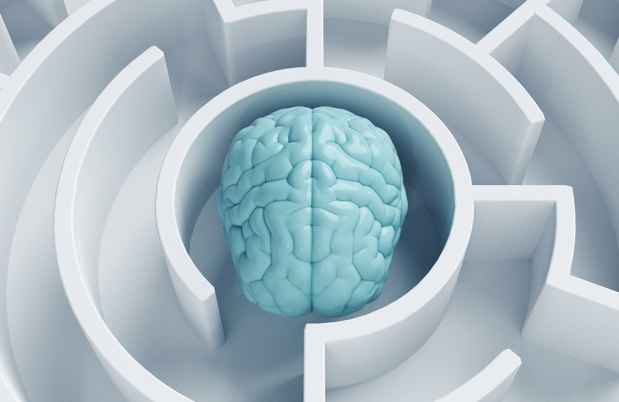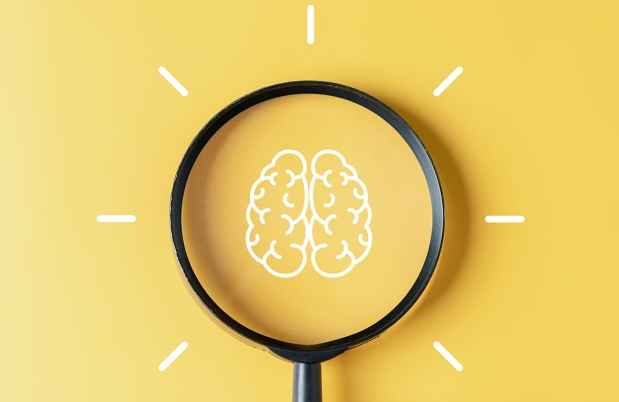Why ECT Is Becoming a Preferred Depression Treatment
No longer a last-resort, ECT should be considered a first-line treatment
March 17, 2022
Brian Neville had a good life. A one-time bodybuilder, he was 43, a successful businessman in the tanning industry, with a home in Massachusetts and a vacation condo in Florida.
Then one morning in 2006 he woke up with the blues. It developed into a persistent darkness that just would not go away. After about six months, he sought treatment. He received prescription medications that he was assured would help counter a listless feeling that made even simple tasks like cleaning a room feel like climbing Mt. Everest while wearing nothing but his shoes.
Except that it didn’t.
Neville, now 54, realized what was troubling him was not what he calls “situation sadness,” a temporary state that can come from the loss of a job or a loved one.
“Everybody knows what it’s like to feel sad,” said Stephen J. Seiner, MD, medical director of the Electroconvulsive Therapy (ECT) Service at McLean Hospital. “And I think most people even know sadness to the point where it can temporarily incapacitate you.”
Keep Reading To Learn
- Why ECT is an effective treatment for depression
- Misconceptions about ECT
- Why ECT should no longer be considered a “last-resort”
Depression Isn’t Just Feeling Sad
But depression goes far beyond mild anxiety or a passing dark moment. It is a physical illness, one the World Health Organization places as the leading cause of disability worldwide. An estimated 16 million American adults, or about 6.7% of the United States population age 18 and over, are diagnosed with major depressive disorder, according to the Anxiety and Depression Association of America.
Depression often accompanies other behavioral health diagnoses, including psychosis, bipolar disorder, or catatonia. It can often be triggered by everyday life stresses or changes. Left untreated, major depressive disorder triggers a cycle that can produce significant life changes, which may include the loss of the ability to work or function normally. It can lead to the deterioration of relationships and result in social isolation. The causes can be varied, including biological, environmental, and genetic factors.
355 million people are affected by depression, making it one of the most common disorders in the world
“There can be a biological predisposition, but there is often a trigger, and we just don’t always know what that trigger is,” explained Seiner. “Very often in patients who experience depression there may be a psychosocial stress that somehow sets off a cascade of neuronal connections in the brain that then leads to an episode of depression. Where most people would be able to bounce back from the stressor, patients who have a predisposition towards depression often continue to spiral down.”
In the most severe cases, depression can make it impossible for a person to function. “It affects you so that sometimes you can’t think straight,” said Seiner. “Your brain plays tricks on you. You can’t eat. You can’t sleep. The smallest task can seem completely overwhelming”
“The worst thing in my day was when my first eye opened in the morning,” Neville recalled. “The second worst thing in my day was when my second eye opened. It meant I had to get up and put on an act, trying to please people and fake everything. I got sick of faking my day.”
He would escape by driving out of town. “I would go to Starbucks and hang out, as far away as Connecticut or Rhode Island. I needed somewhere to kill the day. To get the day going. To get the day over with.”
Depression Screening
Online screening is one of the quickest and easiest ways to determine whether you are experiencing symptoms of depression.

Using ECT to Treat Depression
Effective treatments for depression include counseling, psychotherapy, and prescription medications. However, for an estimated 100,000 people a year in the United States, like Neville, these options fall short. And for them, ECT is safe, reliable, and effective.
The treatment has evolved since the 1930s, when psychiatrists hypothesized that grand mal seizures could help treat schizophrenia, based on the observation that some nerve cells in the brains of people with schizophrenia appeared to be arranged in a way that was the opposite of people with epilepsy. However, it turned out that the seizures were most effective in treating depression and other mood disorders.
Scientists know seizures can reset brain function. And because brain activity involves electrical signals passing through neurons, ECT “is like when you reboot your computer when something has gone awry,” said Paula Bolton, MS, APRN-BC, program director of McLean’s Psychiatric Neurotherapeutics Program. “Although there are a lot of theories, no one is really quite sure why it works.”
The mystery of how to treat depression goes beyond ECT. Psychiatrists are also hard-pressed to explain exactly how medication or psychotherapy affects the synapses.
“We know a lot about what medications do, what they are designed to do, but how that translates into treating a complex human emotion like depression is still not fully understood, just like with ECT,” said Seiner. “We know there are a lot of things ECT does in the brain—we can show that with modern imaging or other scientific techniques—but how that correlates to lifting depression or rebooting is not entirely clear.”
What is clear is that for severe illness, such as psychotic depression or catatonia, where patients can lose 40-50 pounds and can be at some risk of death, ECT has been shown to be 80-95% effective.
Finding Relief
Brian Neville recalls once spending 19 days curled up in a ball in bed, unable to do simple tasks and finding no enjoyment in anything he did. Then he was referred to McLean.
“I would walk in every Tuesday, and if someone had come up with a gun to the back of my head and pulled the trigger, I would have been happy,” said Neville. “Four hours later, I would walk out a totally different person.”

Doctors and nurses work together to deliver safe and effective ECT treatments to patients
However, thanks to many ECT treatments in two courses over several years—combined with good nutrition and exercise—that all changed.
“In November of 2011, I got up at around 2:30 in the morning to get something to eat, and it was like a switch went off, literally,” he explained. “I went ‘whoa, I can feel things.’ I went back to bed, and for the first time in five years, I was excited to get out of bed. I felt like I can enjoy today.” He has been well since and has not needed to return to ECT.
Stigma as a Barrier to Care
Despite that track record, ECT has been shrouded in stigma, particularly in popular culture through movies such as “One Flew Over the Cuckoo’s Nest,” a 1975 film that portrayed a punitive, painful treatment of a patient transferred to a hospital from a prison farm.
Today’s treatment is a far cry from the film version. It’s usually done on an outpatient basis. Patients receive general anesthesia and a muscle relaxant that puts them to sleep for five minutes and relaxes the body so there is little, if any, movement. Electrodes are placed on the scalp, usually on the right temple and on the top of the head, and low-intensity electrical pulses are administered to trigger a grand mal seizure. Treatments generally are given two or three times a week until the symptoms are in remission.
Seiner noted that today’s treatment reflects “a lot better understanding of how much stimulus is needed and the best places in the brain to induce a seizure to minimize side effects. The patients are completely asleep, so there is little to no movement when the seizure is induced. We also have better monitoring to make it safer. We have better medications to make it more comfortable. And now it’s done more often on an outpatient basis, and patients tend to tolerate it pretty well.”
Despite these changes, several fictions linger around ECT.
“Fiction number one is that it’s painful,” stated Seiner. “The only mildly painful part for people is when we put a tiny IV in. And occasionally, most often after the first treatment, people have a mild headache.”

Dr. Stephen Seiner talks with an ECT patient
Another lingering misconception is ECT will change your personality. “Depression changes people’s personalities,” Seiner said, explaining ECT brings people back to their baseline traits.
Another fiction is the fear of brain damage.
“While ECT can sometimes cause people to lose some past memories, we’ve become much better at mitigating that, and it’s less common and much less severe,” said Seiner, explaining unilateral placements of electrodes and the use of “ultra-brief pulses” better emulate how the brain works, so clinicians can induce seizures with less electricity and fewer side effects.
“There’s no evidence ECT causes any long-term effect on your ability to learn, on your cognition, or on your ability to make new memories. The research indicates that if you wait two months after ECT, or six months, after the ‘dust’ of the ECT has settled, most people do much better on neuropsychological testing than they did before ECT. That’s because when people aren’t depressed, they think better and test better.”
Using TMS
Certain patients can be treated with transcranial magnetic stimulation (TMS), which induces an electric field in the brain using a magnetic pulse, rather than applying an electrical field directly through ECT.
Seiner explained that TMS specifically targets the depression center of the brain, while ECT is “a more general treatment. TMS doesn’t require anesthesia and has no cognitive side effects. It is a daily treatment for 4-6 weeks, and since it is milder, it is better for more standard depressions, rather than psychotic depression or catatonia.
Clinicians are also turning to “deep TMS,” which penetrates deeper into the brain, and there is now experimental magnetic seizure therapy to induce seizures under anesthesia.
“ECT is getting gentler and gentler, and TMS is trying to find ways to get stronger and stronger,” said Seiner.
Those changes also mean ECT should not be viewed as a last resort.
McLean Is Here To Help
For more information or to make a referral to McLean’s ECT Service, please call us today.

ECT Is Not a Last Resort
For patients with psychotic depression and catatonia, and an accompanying high risk of complications such as self-harm, ECT should be considered as a first-line treatment.
“We often don’t see a patient until after they have lost their job, isolated themselves, and maybe even made a suicide attempt and ended up on the inpatient unit,” said Seiner. “We’d rather see them earlier and prevent all those things because it’s a lot easier to put your life back together when you don’t have to start all over.
“It’s not something someone would typically choose to do right away, but I think it also depends on the severity of their illness,” added Bolton, noting some patients “are so severely depressed or suicidal that ECT is necessary to get them better quicker.”
No matter the course of treatment, the most important step any patient or family member should take is to learn the pros and cons. Bolton said they should meet with clinicians to review risks and benefits.
Equally important is to speak directly with other patients. McLean offers monthly support groups with nurses and patients, open to people before and after treatment.
“The more we talk about ECT and real-life stories and what a difference it makes in people’s lives, the better, because it helps to develop strategies to help people cope during treatment,” said Bolton.
What’s also needed is a better understanding about the nature of the illness, an area where Charles Welch, MD, another McLean ECT physician, believes the United States trails many other countries.

Though currently considered one of the best options for severe and treatment-resistant depression, ECT has a long history of misconceptions and stigma
“Depression is a physical illness,” said Welch. “It’s not clear exactly what structures of the brain are involved in what ways, but it’s very clear this is a physiologic illness that’s very responsive to treatment. In the United States, the stigma that goes along with depression is very unfortunate. Too often, people are ashamed of their symptoms, afraid to let people know of their symptoms, and they struggle for years with these debilitating symptoms of depression that are, ironically, completely treatable.”
Welch believes medical schools have an important role to play in the education of patients and the public.
“We tend to be too conservative in the use of ECT in this country,” said Welch, adding it should be considered earlier in the treatment cycle. “We see so many patients who come to us with this kind of history of having struggled for decades with inadequately treated depression. This is a worldwide problem. We are simply not being aggressive enough in intervening therapeutically in the lives of people with depression.”
Ultimately, Seiner said, two things are true generally about every patient who seeks treatment with ECT.
“One is that they’re really struggling, and two, they’re terrified about what we do. It’s important to get them better, but our job is to walk them through it, to be there with them. This is what we’re committed to. We understand. And that makes a huge difference.”
Today Neville has the same goal.
“I want to get out there and educate people, to bring comfort to the people with depression.”



